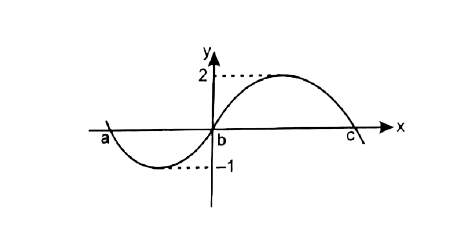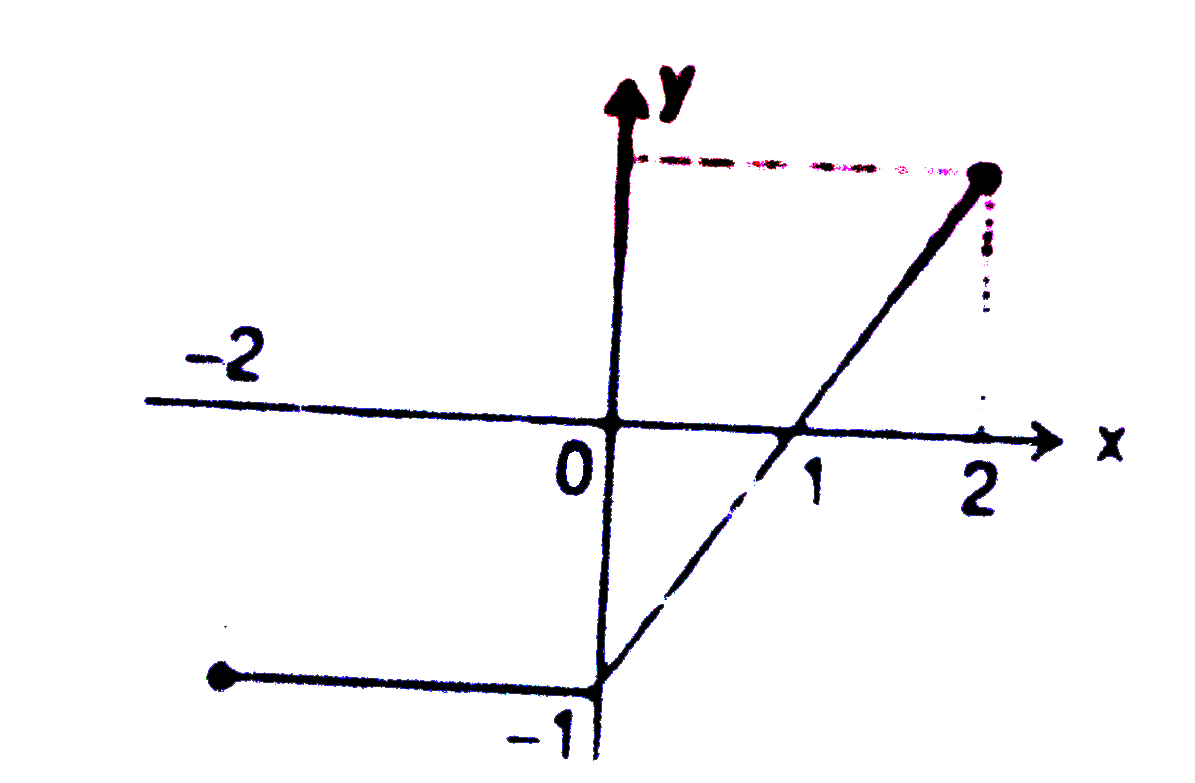If f(x) is a polynomial function of the second degree such that, , then the graph of the function, f(x) cuts the ordinate x = 1 at the point
(1, 8)
(1, 4)
(1, -2)
(1, 9)
The correct Answer is:A
To solve the problem step by step, we will follow the process of determining the coefficients of the polynomial function f(x) based on the given conditions, and then we will find the value of f(1).
Step 1: Assume the form of the polynomial
Since f(x) is a polynomial function of the second degree, we can express it in the standard form:
f(x)=ax2+bx+c
Step 2: Use the first condition f(−3)=6
Substituting x=−3 into the polynomial:
f(−3)=a(−3)2+b(−3)+c=6
This simplifies to:
9a−3b+c=6(Equation 1)
Step 3: Use the second condition f(0)=6
Substituting x=0:
f(0)=c=6(Equation 2)
Step 4: Use the third condition f(2)=11
Substituting x=2:
f(2)=a(2)2+b(2)+c=11
This simplifies to:
4a+2b+c=11(Equation 3)
Step 5: Substitute c=6 into Equations 1 and 3
Substituting c=6 into Equation 1:
9a−3b+6=6⟹9a−3b=0⟹3a=b(Equation 4)
Substituting c=6 into Equation 3:
4a+2b+6=11⟹4a+2b=5(Equation 5)
Step 6: Substitute b=3a from Equation 4 into Equation 5
Substituting b=3a into Equation 5:
4a+2(3a)=5⟹4a+6a=5⟹10a=5⟹a=12
Step 7: Find b using a
Using a=12 in Equation 4:
b=3a=3×12=32
Step 8: Write the polynomial function
Now we have:
a=12,b=32,c=6
Thus, the polynomial function is:
f(x)=12x2+32x+6
Step 9: Find f(1)
Now we need to find the value of f(1):
f(1)=12(1)2+32(1)+6
Calculating this gives:
f(1)=12+32+6=2+6=8
Conclusion
The graph of the function f(x) cuts the ordinate at x=1 at the point (1,8).
Since f(x) is a polynomial function of the second degree, we can express it in the standard form:
f(x)=ax2+bx+c
Substituting x=−3 into the polynomial:
f(−3)=a(−3)2+b(−3)+c=6
This simplifies to:
9a−3b+c=6(Equation 1)
Substituting x=0:
f(0)=c=6(Equation 2)
Substituting x=2:
f(2)=a(2)2+b(2)+c=11
This simplifies to:
4a+2b+c=11(Equation 3)
Substituting c=6 into Equation 1:
9a−3b+6=6⟹9a−3b=0⟹3a=b(Equation 4)
4a+2b+6=11⟹4a+2b=5(Equation 5)
Substituting b=3a into Equation 5:
4a+2(3a)=5⟹4a+6a=5⟹10a=5⟹a=12
Using a=12 in Equation 4:
b=3a=3×12=32
Now we have:
a=12,b=32,c=6
Thus, the polynomial function is:
f(x)=12x2+32x+6
Now we need to find the value of f(1):
f(1)=12(1)2+32(1)+6
Calculating this gives:
f(1)=12+32+6=2+6=8
The graph of the function f(x) cuts the ordinate at x=1 at the point (1,8).
Topper's Solved these Questions
- RELATIONS AND FUNCTIONS Book:AAKASH INSTITUTE ENGLISHChapter:RELATIONS AND FUNCTIONS Exercise:Assignment (Section - C) Objective Type Questions (More than one option are correct)
Explore 17 Videos
- RELATIONS AND FUNCTIONS Book:AAKASH INSTITUTE ENGLISHChapter:RELATIONS AND FUNCTIONS Exercise:Assignment (Section - D) Linked Comprehension Type Questions
Explore 17 Videos
- RELATIONS AND FUNCTIONS Book:AAKASH INSTITUTE ENGLISHChapter:RELATIONS AND FUNCTIONS Exercise:Assignment (Section - A) Objective Type Questions (one option is correct)
Explore 102 Videos
- PROBABILITYBook:AAKASH INSTITUTE ENGLISHChapter:PROBABILITYExercise:ASSIGNMENT SECTION-J (aakash challengers questions)
Explore 11 Videos
- SEQUENCES AND SERIES Book:AAKASH INSTITUTE ENGLISHChapter:SEQUENCES AND SERIES Exercise:Assignment (SECTION - J) Aakash Challengers
Explore 11 Videos
Similar Questions
Knowledge Check
Let f(x) be a polynomial function: f(x)=x5+.... if f(1)=0 and f(2)=0, then f(x) is divisible by
Ax−3Bx2−2Cx2+2Dx2−3x+2
If f(x) is a polynomial function satisfying f(x).f(1x)=f(x)+f(1x) and f(4)=65,thenf∈df(6).
View SolutionIf f(x) is a polynomial function satisfying f(x).f(1x)=f(x)+f(1x) and f(4)=65,thenf∈df(6).
View SolutionThe maximum ordinate of a point on the graph of the function f(x) = sin x( 1+ cos x ) is
View SolutionLet f(x) be a polynomial of degree 2 satisfying f(0)=1,f(0)=−2andf''(0)=6, then ∫2−1f(x) is equal to
View SolutionLet f(x) be a function such that f(x),f'(x)andf''(x) are in G.P., then function f(x) is
View SolutionLet f (x) be a polynomial function of degree 3 where a<b<candf(a)=f(b)=f(c). If the graph of f (x) is as shown, which of the following statements are INCORRECT ? (Where c>|a|)

View SolutionIf the graph of the function y=f(x) is as shown :

the graph of y=12(|f(x)|−f(x)) is
View Solution